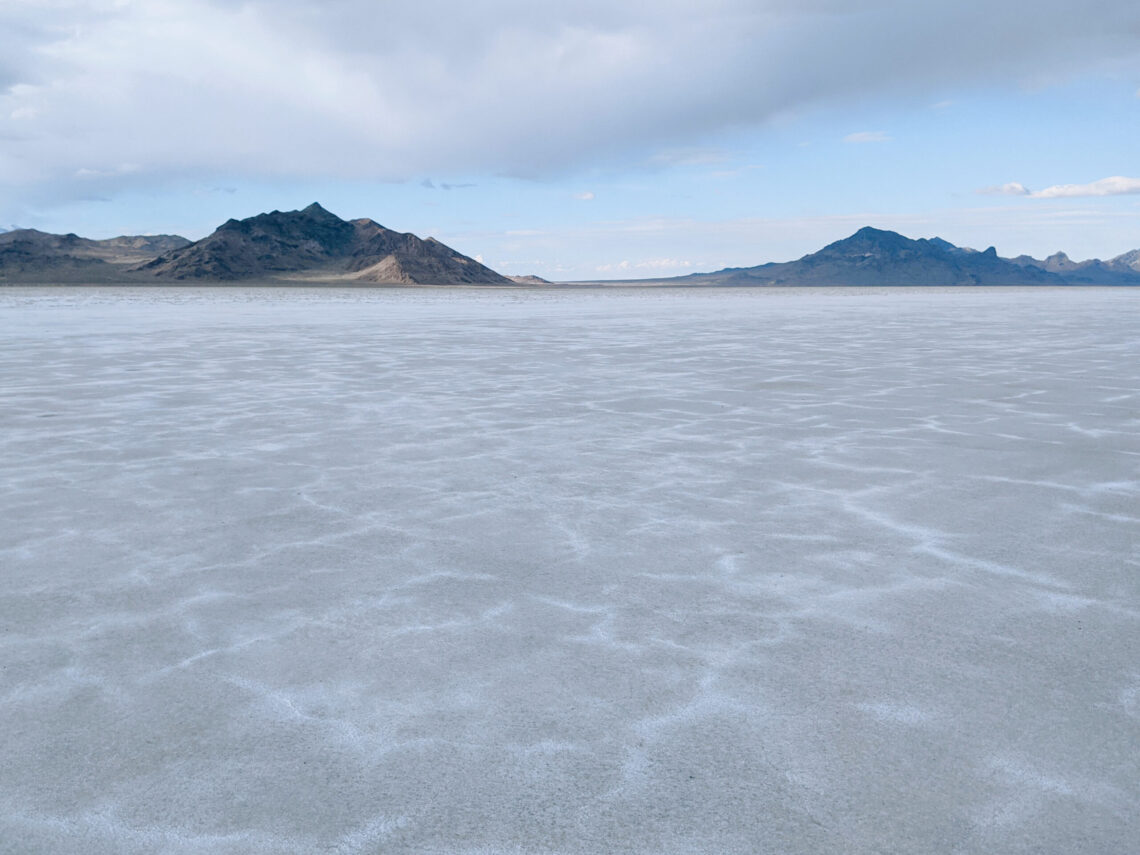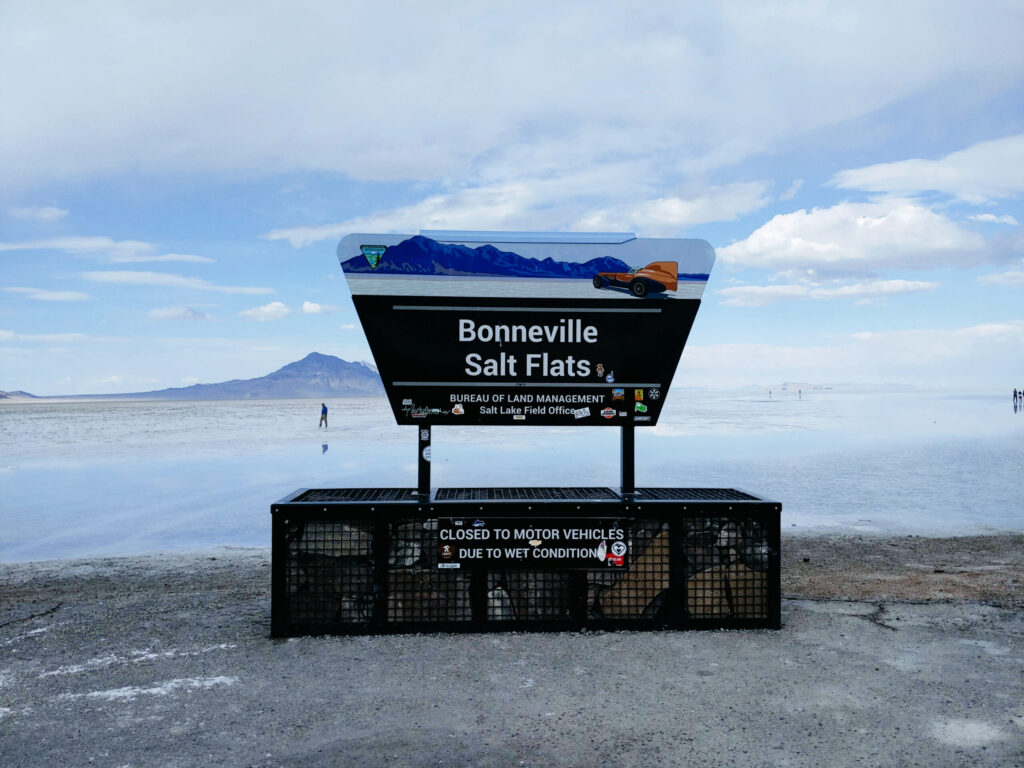
“Anytime you want to know what it feels like to go to another planet,” says Dennis Sullivan, President of the Utah Salt Flats Racing Association, “you go to Bonneville Salt Flats.”2
He isn’t wrong. Stepping onto the 30,000-acre expanse of salt crust on the western edge of the Great Salt Lake basin in Utah1 feels like leaving Earth behind. Blazing white salt crust, gritty and distinctive beneath your feet, stretches all the way to the horizon, where it runs into the Silver Island Mountains. Optical illusions blur that line, vanishing mountain bases before your very eyes. And after storms pass through, rainwater pools on the flats, creating an ethereal mirror.
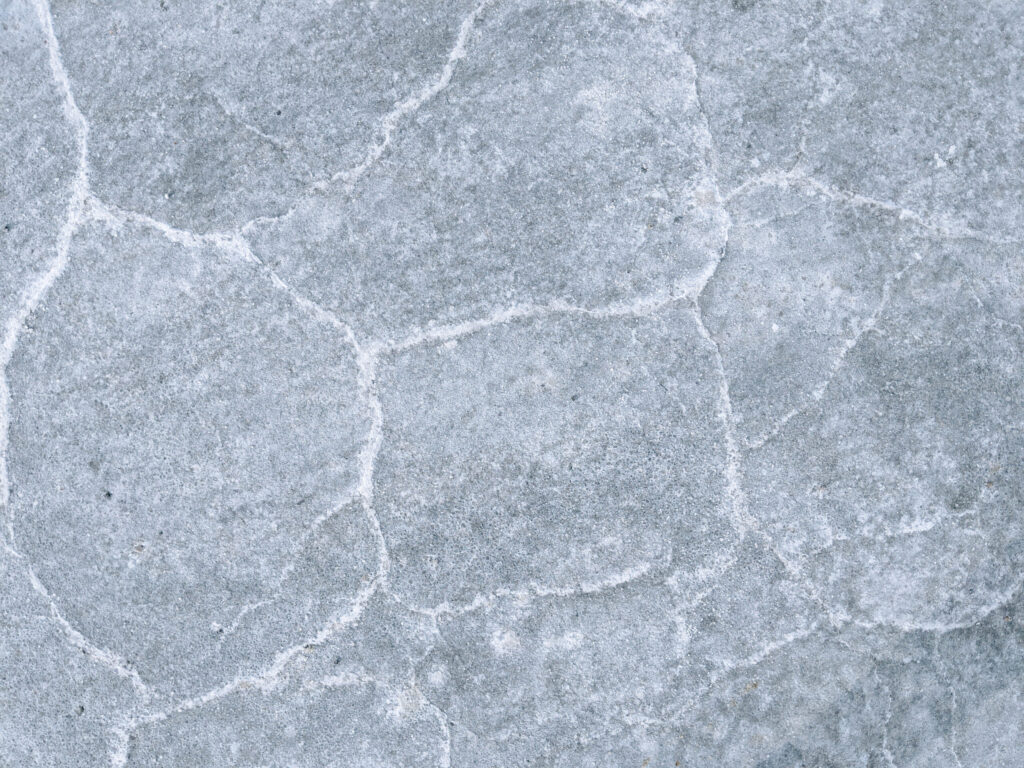
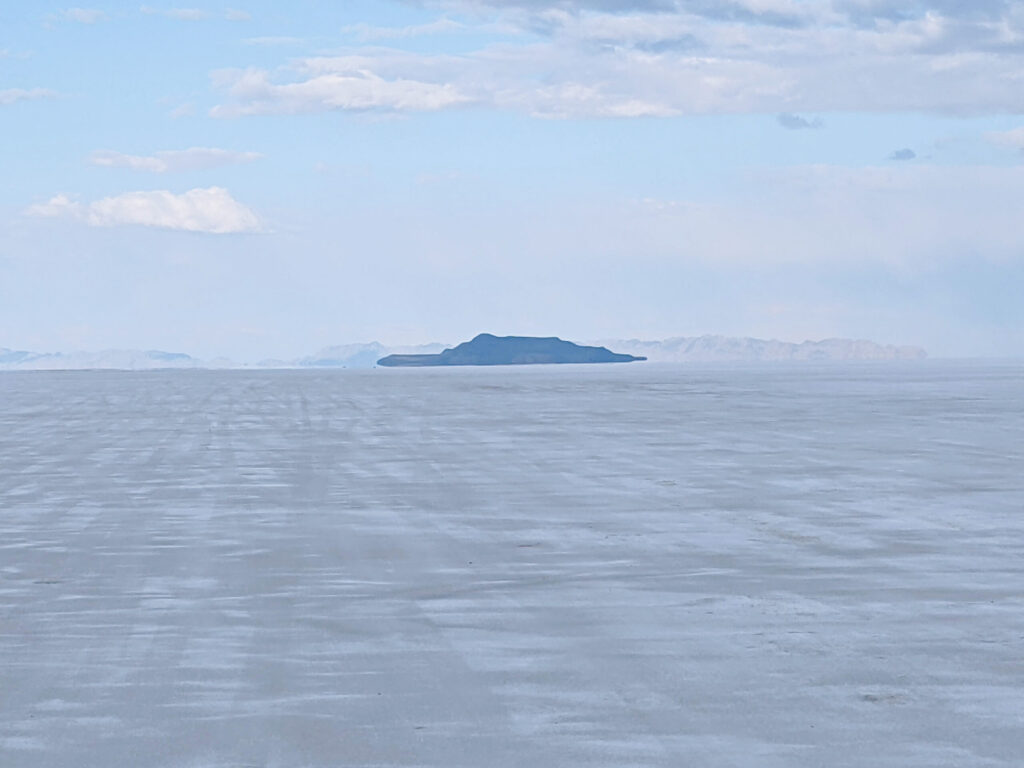
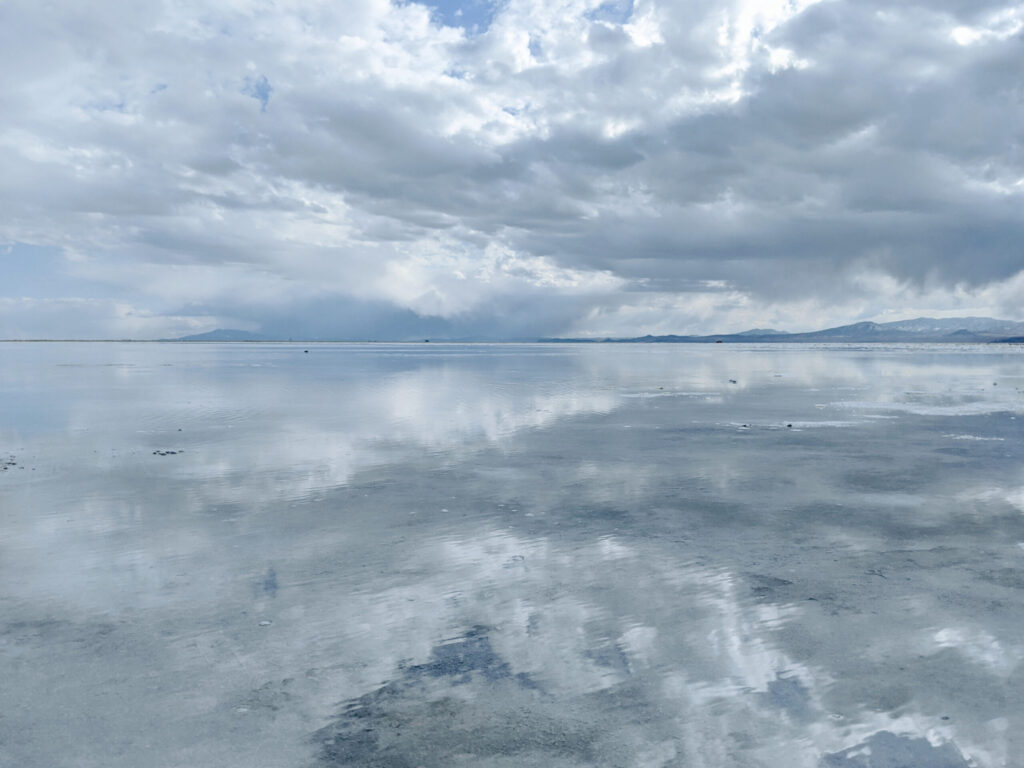
Intrigued? We thought so. Today, we’re highlighting the Bonneville Salt Flats as a hidden gem destination that might’ve missed your travel wish list. Here’s a closer look at this unique location and why it deserves a spot on your list of places to explore.
The Salt Flats: A Geological Marvel
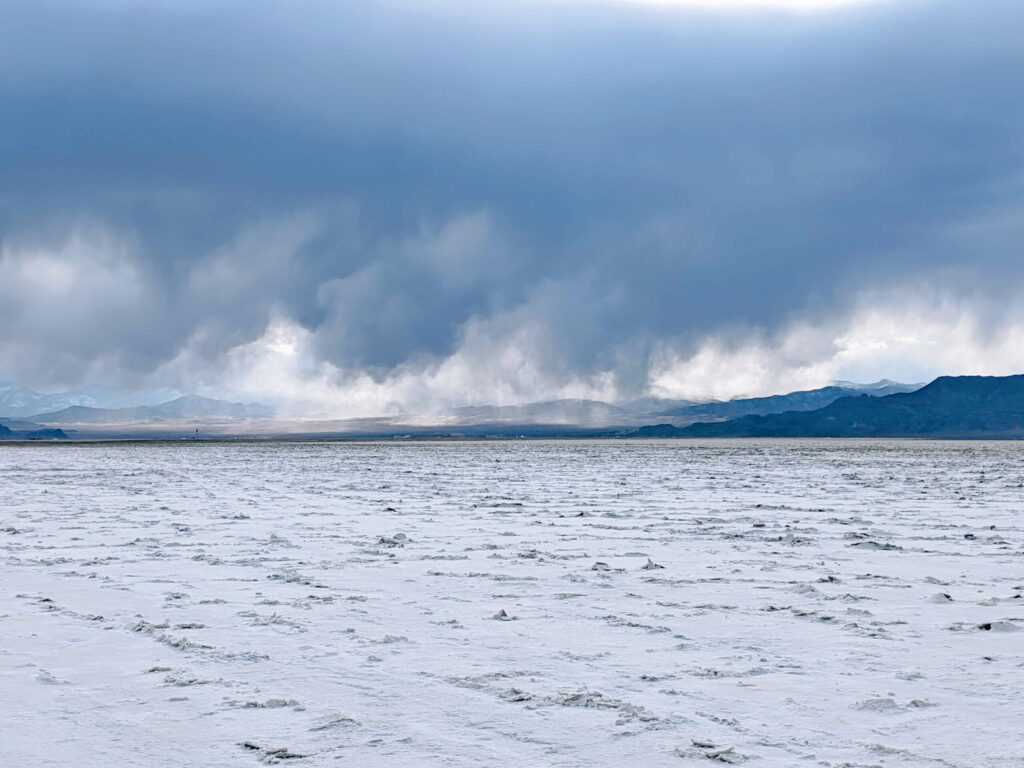
When you think of salt flats, you probably picture the famous and highly photographed Uyuni Salt Flats in Bolivia. But while Bolivia boasts the largest salt flats on Earth, this striking geological feature can be found on a smaller scale all over the world. Here in the United States, the Bonneville Salt Flats are a standout example. Sitting in the midst of a red Utah desert, the flats are a white stretch of hardened salt crust left over from a Late Pleistocene lake.3 The salt flats span 12 mi (19 km) long and 5 mi (8 km) wide, covering an area slightly larger than 46 mi2 (119 km2).1
Here, the temperatures top 100℉ (38℃) in the summer and drop below freezing in the winter.1 In the springtime, the salt is especially moist and standing water on the surface is common,1 making the season particularly beautiful for photographers, but much less accessible for motor vehicles. In summer, when the salt is hard enough and where the crust is thick enough (its depth ranges from 6 ft [2 m] to less than an inch),1 the ground is perfect for driving — and racing.
What to Do at the Bonneville Salt Flats
With its dynamic and dreamlike landscape, Bonneville is an extraordinary backdrop to a wide range of activities:
Recreation
Many visitors enjoy themselves simply walking around the flats, but you can also participate in a variety of events throughout the year, from 100 mi endurance runs to archery competitions. Just note that overnight camping is not allowed; make the flats a stop on your road trip route, or plan accommodation nearby.
Racing
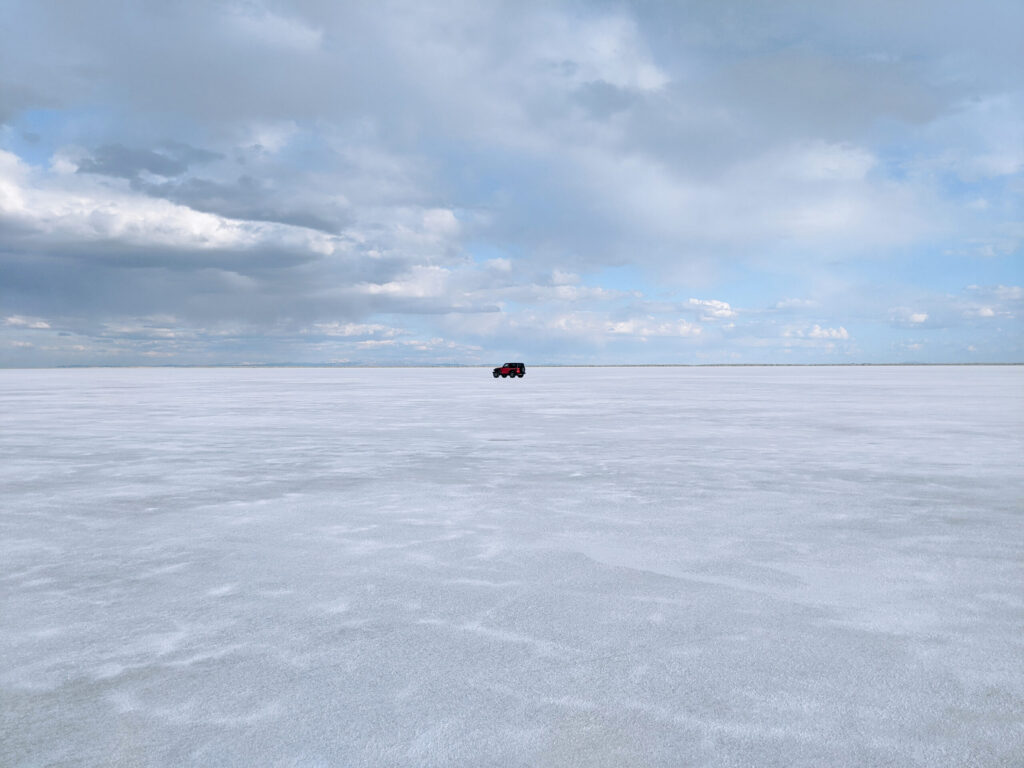
For all its compelling beauty, the Bonneville Salt Flats are functional, too — as a world-renowned natural racetrack. The hard expanse of salt provides an excellent straightaway that allows automobiles to reach breakneck speeds thanks to its unique, salty composition. The textured salt gives tires great grip, while also keeping them cool enough to prevent burnout.
Bonneville’s potential as a racing hotspot was recognized as far back as 1896 — and by 1914, it was already changing the game, with an unofficial speed record of 141.73 mph (228.09 km/hr). Since then, it has seen the smashing of the 300, 400, 500, and 600 mph land speed barriers.1
You can celebrate these record speeds, admire this natural straightaway, and seek even greater speeds at Bonneville’s annual Speed Week, a racing experience unlike any other. Ardent and inventive motorists from around the world meet here every year (usually in August) with hand-built cars and extraordinary dedication to the sport.
Photography
The salt flats are also a prime shooting location for photographers of all skill levels. Get stunning shots of the wet salt flats reflecting Utah’s big skies or have fun playing with perspective.
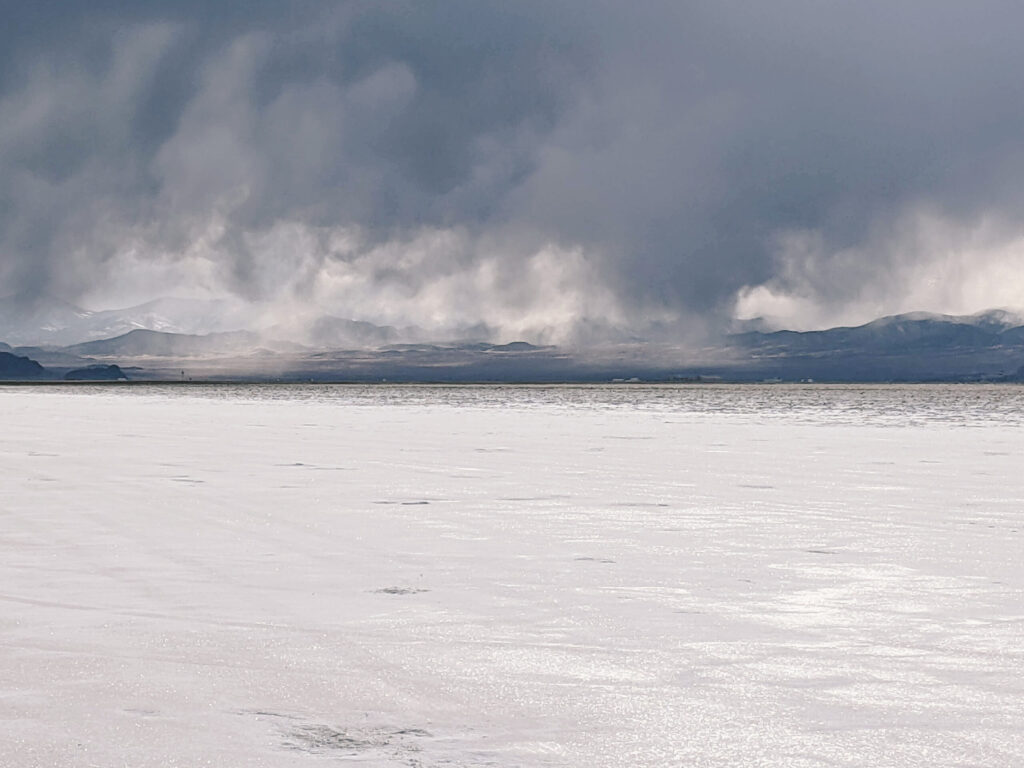
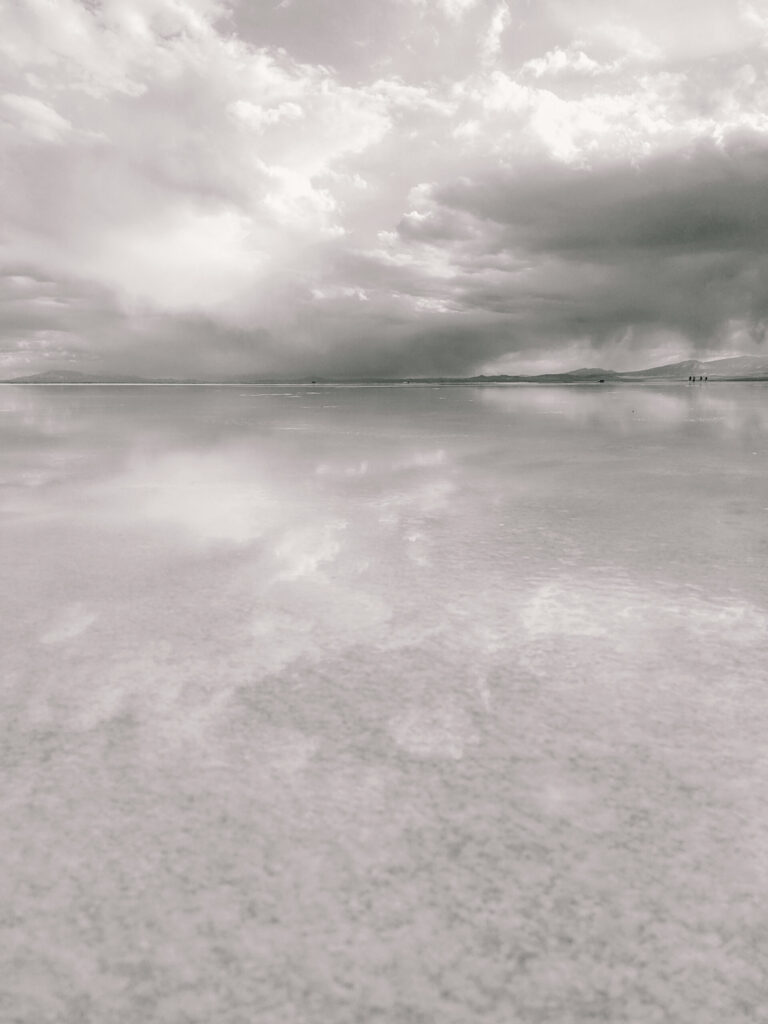
Know Before You Go
- The Bonneville Salt Flats are bare-bones when it comes to facilities. You’ll find a parking area and a sign so you know you’ve arrived, but there are no restrooms here. Make sure you’re good to go beforehand! You won’t find restaurants, gift shops, or coffee, either, so get what you need on the way.
- Out on the salt flats, the sun can be pretty intense, so make sure you’re prepared. Bring your sunglasses, sunscreen, and water so you don’t go thirsty. It’s also a great idea to bring your own shade; wear a hat or take an umbrella.
- You might see dazzling blue canals streaking across the flats, and while they’re temptingly beautiful, you should not swim, kayak, or otherwise recreate in the canals. They are actually part of the mining process for potassium salts and belong to the mining company. Keep out!
- Avoid driving on wet salt so you don’t get stuck.
- Check the weather just before you head out for more accurate predictions. Even slight rains can cause flooding that can make the salt flats challenging to navigate.
- Plan the timing of your visit. For racing and driving, go in the summer when the salt crust is hard. For photography, you might want to explore in wetter seasons like spring so you can shoot reflections in water pools. For Speed Week and other events, check Bonneville’s annual calendar here.
However you choose to spend your time at the Bonneville Salt Flats, you’re sure to have a memorable experience in an otherworldly place. Add the flats to your list and elevate your next Utah road trip!
Thank you for exploring with us! Until next time, may the pages and paths ahead of you be great.
Sources:
- Bureau of Land Management. (n.d.). Bonneville Salt Flats Special Recreation Management Area (SRMA) | Bureau of Land Management. https://www.blm.gov/visit/bonneville-salt-flats
- CBS Mornings. (2019, October 5). Debate rages over the future of the Bonneville Salt Flats [Video]. YouTube. https://www.youtube.com/watch?v=CNqeRt1Rltc
- Doane, J. (n.d.). A quick guide to visiting the Bonneville Salt Flats. Visit Utah. https://www.visitutah.com/articles/bonneville-salt-flats-planning-guide
